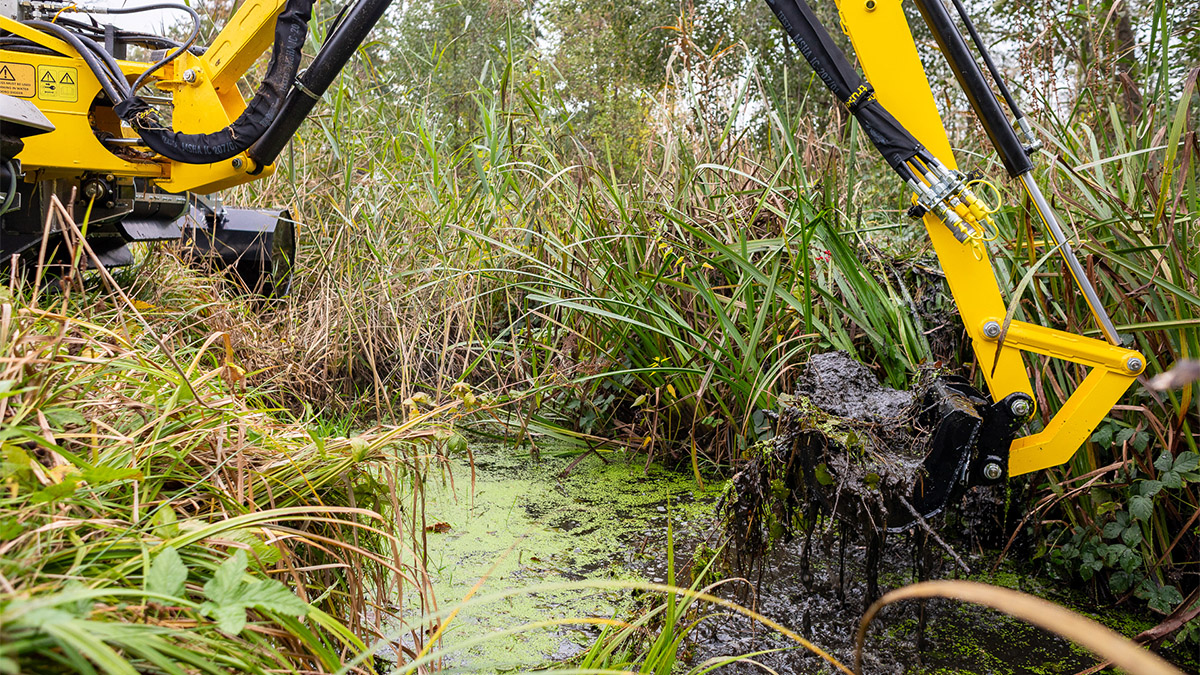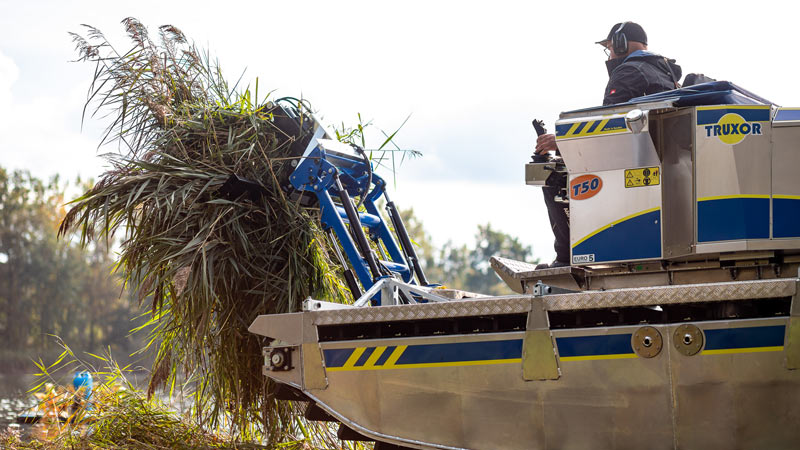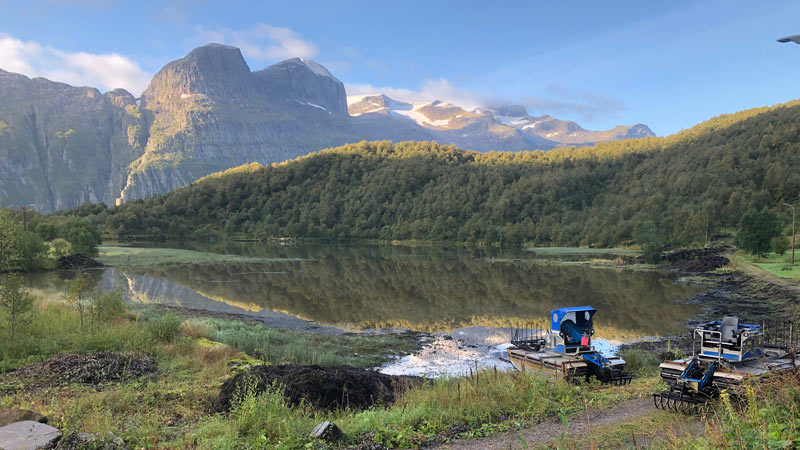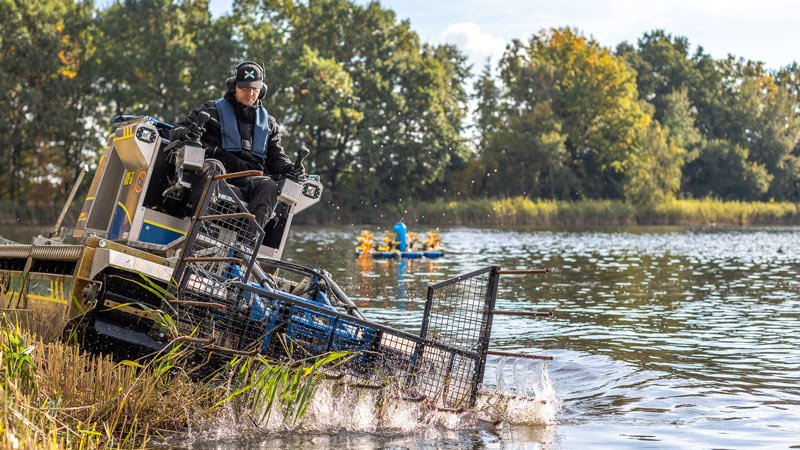Logged in as:
Catchment Management with Truxor
Effective catchment management is essential for maintaining healthy waterways, preventing flooding, and preserving ecosystems. As catchments collect and funnel water from rain, snow, and other sources into rivers, lakes, and oceans, they face challenges like excess vegetation, sediment build-up, and pollution. The Truxor Amphibious Machine is a highly efficient solution for managing catchments, designed to perform a range of tasks.
What is Catchment Management?
Catchment management involves maintaining and improving the condition of an area where water collects and drains into a common outlet. This can be anything from a small stream to a large river system. The aim is to balance the natural flow of water while reducing pollution, erosion, and other environmental impacts. Water from rainfall or snowmelt moves through soil, across land, and into waterways, bringing with it debris, pollutants, and sediments.
Managing this process ensures that water quality is maintained, and flooding is minimized. Proper catchment management also protects local ecosystems and ensures that the area can continue to support human activity, like agriculture and recreation.


The Role of Truxor in Catchment Management
The Truxor Amphibious Machine is particularly suited for catchment management due to its versatility in both water and on land. It is a lightweight yet powerful tool that can handle a range of tasks essential to maintaining catchments, including:
- Aquatic vegetation control: Cutting and removing excessive aquatic plants that can block water flow or damage ecosystems.
- Sediment and debris removal: Dredging accumulated sediment from the bottom of rivers, lakes, or drainage systems, and collecting floating debris.
- Erosion control: Stabilizing shorelines and minimizing the impact on sensitive areas like wetlands or riverbanks.
Unlike traditional heavy equipment, Truxor is designed to navigate soft and wet ground without causing significant damage to the environment. Its amphibious nature allows it to perform multiple tasks in one go, making it an efficient solution for catchment management.
Key Functions of Truxor in Catchment Management
Vegetation Control
Excessive vegetation can obstruct waterways, reduce water flow, and lead to flooding. Truxor’s cutting tools can easily remove overgrown plants from both water and land, restoring normal water movement and improving the health of the ecosystem.
Sediment and Debris Removal
Over time, sediment and debris like logs, garbage, and silt accumulate in water bodies. This can reduce water quality, increase the risk of flooding, and damage aquatic habitats. Truxor can be equipped with dredging tools to remove sediment and collectors to clear floating debris, ensuring the catchment remains clear and functional.
Erosion Control
Erosion of riverbanks and shorelines can lead to loss of land, increased sediment in water, and habitat destruction. Truxor can help stabilize these areas by redistributing sediment and controlling the rate of erosion without causing further damage to delicate ecosystems.


Different Kinds of Catchments
There are various types of catchments, each with its own challenges. Here are the ones most suitable for Truxor:
- Urban Catchments: In cities and towns, where impermeable surfaces like roads and buildings increase runoff, managing stormwater and preventing flooding are key concerns.
- Rural Catchments: These areas are often agricultural, requiring careful management to prevent erosion and manage runoff from fields.
- Forest Catchments: Found in forested areas, these catchments benefit from the natural filtering provided by trees but may need help managing sediment and maintaining water quality.
- Wetland Catchments: Wetlands are important for filtering water and controlling flooding, but invasive plants or debris can clog water movement.
- Coastal Catchments: These drain into coastal waters and are sensitive to both freshwater and saltwater influences. They require careful balancing to protect ecosystems like estuaries and mangroves.
Why Choose Truxor for Catchment Management?
Truxor’s amphibious design makes it the ideal choice for managing catchments that involve both land and water. Unlike heavy machinery, it can move across soft, wet ground without sinking or causing damage. Its multifunctionality means that a single machine can clear vegetation, dredge sediment, collect debris, and stabilize eroded areas—saving time and reducing the need for multiple pieces of equipment.
Another key advantage of using Truxor is its environmental sensitivity. Because it is lightweight and designed to minimize disruption, it works effectively in delicate ecosystems like wetlands or forested areas. This makes it an excellent choice for long-term sustainable catchment management.

